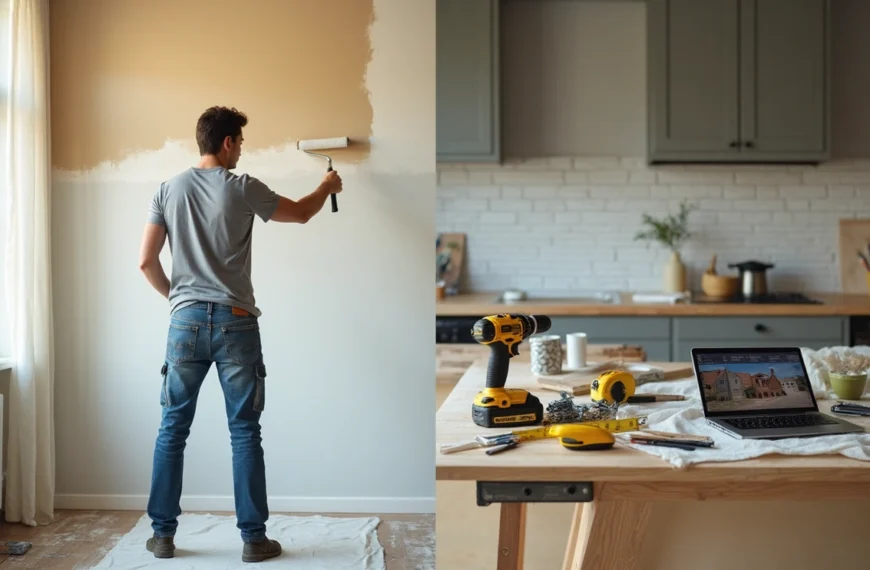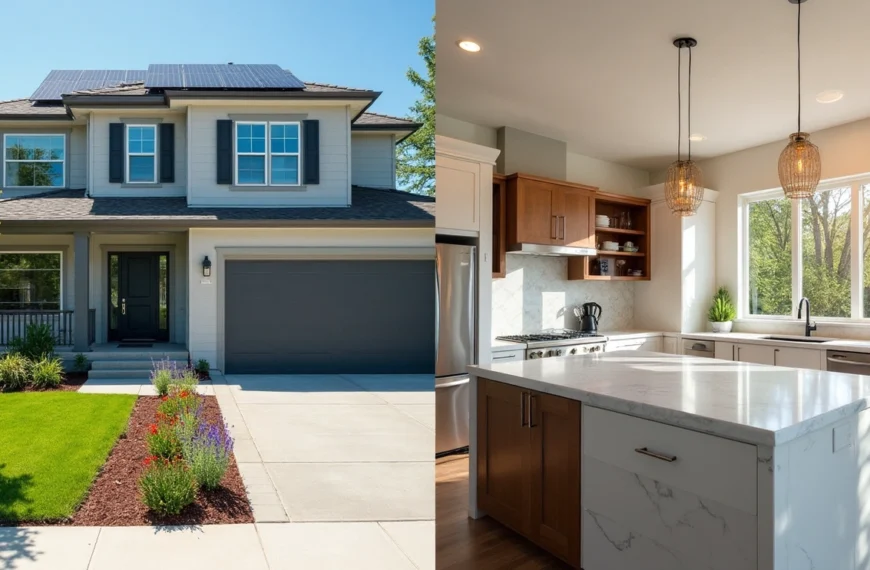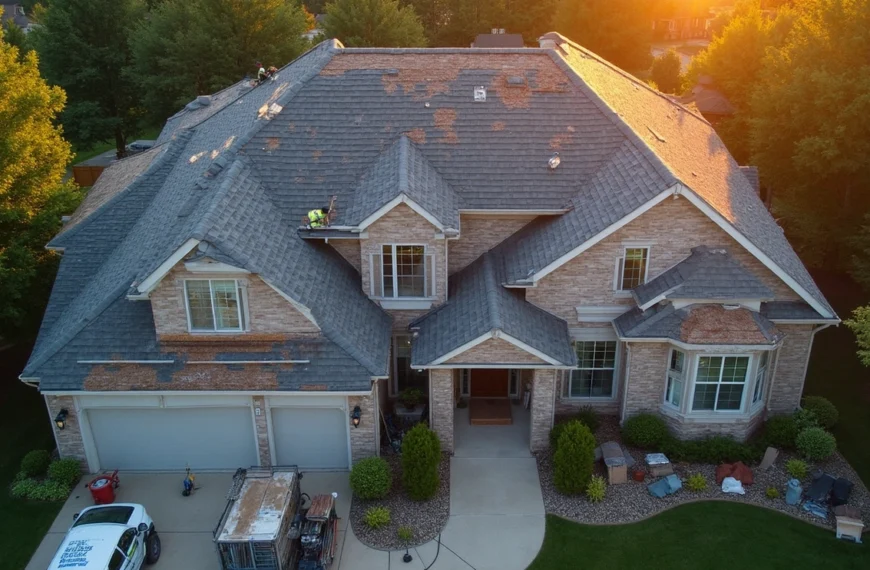Bathroom vanity dimensions are a vital part of creating functional and beautiful bathroom spaces. The “2024 US Houzz Bathroom Trends Study” reveals that 57% of homeowners who renovate their bathrooms now choose custom bathroom vanity cabinet dimensions. These numbers show how important proper sizing has become before making a purchase.
Standard bathroom vanity widths range from 24 to 72 inches. The depth usually measures between 14 to 26 inches, averaging around 21 inches. Most standard vanities stand 31 to 32 inches tall. Comfort-height options that measure 34 to 36 inches have become more popular lately. Small bathrooms work well with vanities between 19 to 24 inches. Medium-sized spaces can handle 30 to 42-inch widths effectively. Larger bathrooms accommodate vanities 48 inches or wider. Double sink options start at 48 inches and can extend up to 72 inches.
This piece provides a detailed look at bathroom vanity sizes. You’ll learn about measuring techniques and find expert advice to select dimensions that match your space requirements perfectly.
Understanding Standard Bathroom Vanity Dimensions

Image Source: Dimensions.com
Choosing the right bathroom vanity dimensions means knowing the standard sizes you can find in today’s market. The right size will give a perfect fit in your space, good storage, and comfortable daily use.
Width of bathroom vanity: Common sizes and use cases
The standard bathroom vanity width typically ranges from 24 to 72 inches. Single vanities measure between 24 and 48 inches while double vanities range from 48 to 72 inches. Most single-sink vanities come in widths of 24, 30, 36, and 48 inches.
Single vanities (24-48 inches) fit well in powder rooms, guest bathrooms, or spaces one person uses at a time. Double vanities that start at 48 inches work best for shared bathrooms. They give separate sink areas and extra storage space.
Your bathroom’s size should determine the vanity width:
- Small bathrooms: 24-30 inch vanities
- Medium bathrooms: 36-48 inch vanities
- Large bathrooms: 60-72 inch vanities for double sink configurations
Standard vanity depth and how it affects space
The standard bathroom vanity depth ranges from 20 to 23 inches, and 21 inches is the most common depth. This standard depth lets you install sinks easily and gives enough storage underneath.
Smaller bathrooms or narrow layouts benefit from shallow-depth vanities between 16 and 18 inches. These create more space without losing function. Deeper vanities around 24 inches provide extra storage but need careful planning for plumbing fixtures.
Your choice of depth changes both storage space and bathroom flow. A vanity that’s too shallow won’t store enough, while one that’s too deep might make the room feel tight.
Vanity height standard: What works for most users
Standard bathroom vanity heights usually fall between 30 and 32 inches. This traditional height started decades ago when families needed lower heights for children.
Comfort-height vanities have become popular over the last several years. These measure 34 to 36 inches and match kitchen countertop heights. They help reduce back strain because you don’t need to bend as much. Adults find these taller options more comfortable.
The Americans with Disabilities Act (ADA) suggests a 34-inch vanity height for wheelchair access. If you’re installing vessel sinks, you might need to lower the vanity height to about 31 inches to keep it comfortable.
How to Measure for a Bathroom Vanity
Image Source: Quality Bath
Precise measurements play a vital role to select a new bathroom vanity that fits and works perfectly in your bathroom space. Taking measurements correctly prevents you from getting pricey mistakes and installation headaches.
Tools you’ll need for accurate measurement
You’ll need these tools to start measuring:
- A 25-foot tape measure that covers larger bathrooms completely
- Pencil and paper to write down measurements
- Calculator to work out dimensions
- Level to check how walls arrange
- Optional: laser measure that helps with hard-to-reach spots
These simple tools help you get exact measurements and stay clear of common mistakes that result in poorly fitting vanities.
Step-by-step guide to measuring width, depth, and height
The width of your wall space needs measurement at sink level where your vanity will go. You should take measurements at three points – the baseboard, middle, and top of the wall. The smallest measurement becomes your maximum vanity width.
The depth needs measurement from the wall forward. Watch out for doors or heating vents that might get in the way. Standard vanity depths range from 20 to 23 inches, and 21 inches stands as the most common choice. This measurement shows how far your vanity can stick out from the wall.
Height measurement goes from the floor up to where you want your countertop. Note that standard heights range from 30-36 inches. You can adjust this based on what feels comfortable.
Accounting for countertop overhang and wall clearance
Bathroom vanity tops typically extend 1 to 1½ inches beyond the cabinet edge. This overhang serves a purpose – it keeps water splashes from running straight onto your cabinet fronts.
Your vanity needs at least 30 inches of space in front for easy movement. Cabinet doors and drawers should open without hitting anything. Toilets require 15 inches minimum from their center to any fixture.
Why you should measure twice before buying
A few extra minutes spent double-checking measurements helps avoid much frustration and expense. Installation experts point out that wrong measurements rank among the most common causes of vanity fitting issues.
The bathroom door’s swing path matters too. A drawer that can’t open because the door blocks it makes that storage space useless. The plumbing locations also need checking to make sure they work with your new vanity design.
Choosing the Right Vanity Size for Your Bathroom
Image Source: Wayfair
The right-sized vanity can turn your bathroom from basic to beautiful and comfortable. Your perfect vanity should balance the space you have with how much storage you need and how you’ll use it every day.
Small bathrooms: Best vanity sizes and layouts
Small bathrooms need smart vanity choices. Vanities between 24-30 inches wide work great in powder rooms and tight spaces. Models that are 16-18 inches deep give you enough room to work without taking up too much floor space.
Small spaces work better with these options:
- Corner vanities that make use of empty corners
- Wall-mounted (floating) vanities that save floor space
- Vanities just 14 inches deep but wide enough to be useful
Small single-sink vanities from 18-36 inches wide pack surprising storage space with smart drawer designs.
Medium to large bathrooms: Maximizing space with double vanities
Single vanities between 36-48 inches fit perfectly in medium bathrooms and give plenty of counter space and storage. Bathrooms at least 15 feet in length or width make double vanities a practical choice.
Most double vanities range from 60-72 inches wide and need proper plumbing setup. Each person gets their own storage space, and morning sink battles become a thing of the past. Make sure you have enough room for doors to open and drawers to pull out before you pick a double vanity.
Considering user height and accessibility needs
Vanity height makes a big difference in comfort. Standard heights (30-32 inches) are great for family and guest bathrooms. Comfort-height vanities (34-36 inches) match kitchen counters and help taller people avoid back strain.
ADA guidelines say accessible bathroom vanities should not be taller than 34 inches and must have 27 inches of knee space. Kids’ bathrooms do well with standard 30-inch heights or step stools.
How plumbing and door swing affect vanity placement
Moving plumbing can get pricey, so existing pipes often determine where your vanity goes. You need at least 30 inches of space in front of your vanity to move around easily. Building codes require at least 18 inches from your toilet’s center to the vanity’s edge.
Many people forget about door swings – both bathroom doors and vanity cabinet doors. Good planning helps you avoid doors that won’t open fully or create awkward spots around fixtures.
Standard vs. Custom Vanity Dimensions
Image Source: Casta Cabinetry
Your choice between pre-made and custom vanities depends on your bathroom needs, budget limits, and design priorities.
Standard sizes might work for you
Pre-made vanities are a practical solution for many bathrooms. They come in standardized widths ranging from 18 to 72 inches. Stock options work best with conventional bathroom layouts that don’t have unusual space constraints. Standard vanity sizes start at 9 inches wide. They increase in 3-inch increments, and most stock cabinets measure between 30-36 inches in height.
Many homeowners find pre-made vanities that fit their bathroom dimensions perfectly. These ready-made options provide excellent quality at reasonable prices. They work best in:
- Guest bathrooms and powder rooms
- New homes with standard bathroom layouts
- Projects that need quick installation (you can get them same-day in many cases)
Custom vanity cabinets give you more flexibility
Custom bathroom vanities provide solutions tailored to your unique space and design vision. These vanities are built specifically for your bathroom instead of making your space fit pre-set dimensions.
Here’s what makes them special:
- They fit perfectly in irregular bathrooms or unusual spaces
- You get maximum storage without losing floor space
- You control all materials, finishes, and design elements
- You can add specialized storage like built-in dividers and hidden pull-out racks
Let’s talk about costs and installation
The price gap between standard and custom options is big. Custom vanities cost 20-50% more than pre-made ones. Some sources say they might cost twice as much because they need multiple subcontractors.
Pre-made vanities need separate installation arrangements for sink bowl cutouts and plumbing connections. Custom manufacturers often team up with professional installation teams to provide complete service.
Time is another vital factor to think about. Standard vanities are available right away. Custom options take several weeks or months for design and fabrication. Your project timeline plays a big role in deciding which option suits your renovation plans better.
Conclusion
Selecting the Perfect Bathroom Vanity Dimensions: Final Considerations
The right bathroom vanity dimensions can reshape the scene of your bathroom from basic functionality to genuine comfort and visual appeal. This piece explores standard sizes, measurement techniques, and crucial factors that shape your vanity selection.
Standard dimensions are the foundations of making the right choice. Vanity widths typically span from 24 to 72 inches, with depths of 20 to 23 inches, and heights ranging from 30 to 36 inches. These measurements serve as helpful guidelines rather than strict rules.
Taking precise measurements before buying will help avoid installation mistakes that can get pricey. Your plan should include door swings, plumbing spots, and enough clearance space around the vanity. This careful approach will give a perfect fit without affecting your bathroom’s functionality.
Your bathroom’s size heavily influences the right vanity dimensions. Space-saving options like wall-mounted or corner vanities work best in small bathrooms. Larger bathrooms can handle luxurious double vanities. The focus should be on creating a comfortable flow rather than cramming in the biggest cabinet possible.
User height and accessibility needs play a vital role in everyday comfort. Taller people experience less back strain with comfort-height vanities (34-36 inches). Standard heights (30-32 inches) are ideal for shared family bathrooms.
You ended up choosing between standard and custom vanities based on your specific needs, budget limits, and timeline. Standard vanities are readily available and cost less. Custom options fit irregular spaces perfectly but come with higher prices and longer wait times.
These guidelines and your unique requirements will help you pick vanity dimensions that improve both function and style. A perfect vanity meets your storage needs and matches your bathroom’s design while making your daily routine more pleasant.
FAQs
Q1. What are the standard dimensions for a bathroom vanity? Standard bathroom vanity widths typically range from 24 to 72 inches, with depths between 20 to 23 inches. The height usually falls between 30 to 36 inches, with 31 to 32 inches being the most common standard height.
Q2. Is a 24-inch depth too much for a bathroom vanity? A 24-inch depth can be suitable for larger bathrooms, offering ample storage and countertop space. However, for smaller bathrooms or powder rooms, a reduced depth of 16 to 18 inches is often more appropriate to maintain comfortable movement within the space.
Q3. What size vanity is best for a large bathroom? For large bathrooms, vanities 48 inches or wider work well. Double vanities, ranging from 60 to 72 inches, are excellent choices for spacious master bathrooms, providing ample room for two people to use simultaneously and offering generous storage.
Q4. How do I choose the right vanity height? Consider the users’ heights and needs when selecting vanity height. Standard heights (30-32 inches) work well for shared family bathrooms, while comfort-height vanities (34-36 inches) are better for taller individuals. For accessible bathrooms, stick to ADA guidelines of 34 inches or less.
Q5. What should I consider when measuring for a new vanity? When measuring for a new vanity, consider the width of your wall space, the depth from the wall forward, and the desired height. Don’t forget to account for door swings, plumbing locations, and allow at least 30 inches of clearance in front of the vanity for comfortable movement.
![Bathroom Vanity Dimensions Expert Guide to Perfect Sizing [2025]](https://consumersweek.com/wp-content/uploads/2025/06/Bathroom-Vanity-Dimensions-Expert-Guide-to-Perfect-Sizing-2025.webp)













![No Win No Fee Lawyers: The Hidden Truth About Settlement Cuts Legal representation through no win no fee lawyers gives clients a way to fight cases without paying anything upfront. Many clients don't know that these services take a big chunk of money after winning the case. Lawyers usually take 25% to 40% of what you win as their contingency fee. The amount lawyers take from settlements can add up fast. A $100,000 settlement means your attorney gets $30,000 if they charge a 30% fee after winning your case. Your solicitor's cut might be £10,000 from a £30,000 compensation award, based on your agreement percentage. This payment model stays pretty much the same for no win no fee lawyers in different places, though percentages can change. This piece breaks down what you need to know about contingency fee deals. You'll learn about standard fee ranges, extra costs beyond the basic fee, and times when this payment setup might not work in your favor. Smart clients should think over these money matters before signing up with a lawyer to make better choices about their legal help. What No-Win No-Fee Really Means Image Source: Express Legal Funding A no-win no-fee arrangement, also called a Conditional Fee Agreement, changes the way people get legal help. This payment approach removes the need to pay legal fees upfront and creates a partnership between clients and their attorneys. How contingency fees work No-win no-fee agreements are based on contingency fees. Lawyers get paid only when they win compensation for their clients. Most lawyers take between 25% and 40% of the final amount, based on how complex the case is and where it's filed. Lawyers take their cut after winning the case. To name just one example, see a case where a lawyer wins £30,000 in compensation with a 33% fee - they would receive £10,000. On top of that, some law firms use sliding scales where they charge less for quick settlements and more if the case goes to trial. The law requires a written agreement before any work starts. This paperwork spells out the lawyer's percentage, what costs you'll need to cover, and other key details. What happens if you lose the case The meaning behind "no-win no-fee" is clear - losing your case means you won't pay your lawyer anything. All the same, you should know about a few money-related details. You won't owe your lawyer when you lose, but some deals might make you pay for court fees, expert witnesses, or other case expenses. The other side could also ask you to pay their legal costs. Many lawyers suggest getting "After Event" insurance to protect their clients. These policies cover any costs if you lose your case, which makes the no-win no-fee setup much safer. Why lawyers offer this model Lawyers want to make legal help available to more people, so they offer these payment plans. This setup helps people who don't have much money take legal action when they have valid claims. The payment structure motivates lawyers to work hard. They only get paid by winning cases, which pushes them to get the best results possible. Lawyers carefully assess each case before taking it on a no-win no-fee basis. They usually accept cases that have a good chance of winning, since they put in lots of time and resources without any guaranteed payment. The Real Cost: How Much Do Lawyers Take from a Settlement Image Source: Greiner Law Corp. The true cost of no-win no-fee legal representation becomes clear once we look at contingency fees. Many clients feel surprised to see a big chunk of their settlement checks going to their attorney's fees. Typical percentage ranges (25%–40%) No win no fee lawyers typically ask for 25% to 40% of the total settlement amount. Personal injury attorneys usually take 33.3% (one-third) of the awarded compensation[101]. Lawyers and clients agree on this percentage before any work starts on the case. Several factors shape the final percentage. Your chances of winning, case complexity, and the work to be done play key roles in determining the attorney's cut. Some areas have laws that cap the maximum contingency fees for specific types of cases. Sliding scale based on case complexity Law firms often use a tiered fee system that changes with the case stage and complexity. This scale rewards quick settlements while paying attorneys fairly if more work becomes needed. The fee might start at 30% if the case settles before lawsuit filing. This number could climb to 35% after filing or reach 40% if the case goes to trial. Law firms often group cases by complexity: 10%-20%: Simple cases with straightforward settlements 25%-35%: Typical personal injury cases 35% and above: Complex cases requiring extensive resources Examples of payout breakdowns These ground examples show how fees affect settlements: A $15,000 settlement with a 33.3% contingency fee.pdf) puts $5,000 in the attorney's pocket, leaving $10,000 for the client. Similarly, from a $100,000 settlement with a 33% fee, the attorney gets $33,000 while the client receives $67,000[102]. Complex cases tell a different story. A $100,000 settlement with a 30% fee plus $5,000 in extra costs leaves $65,000 for the client after all deductions. These fees substantially change the client's final payout. Hidden Costs You Might Not Expect Image Source: Nelson Personal Injury Lawyers Beyond percentage-based fees, clients often feel surprised by extra costs that can reduce their final compensation by a lot. These hidden costs show up in the fine print of no-win no-fee agreements. You should think over these details before signing. Court filing and expert witness fees Legal proceedings come with unavoidable court filing fees. These charges differ by jurisdiction. They usually range from $30 for small claims to several hundred dollars for complex civil lawsuits. Expert witnesses can be expensive, with hourly rates ranging from $150 to $1,000 based on their credentials and testimony complexity. Expert witnesses charge more for court appearances than consultation work because of added pressure and prep time. Clients might still need to pay experts for their prep work even if the case settles before trial. Medical report and investigation costs Medical documentation is a vital part of many legal claims. These costs include fees to release medical records, create specialized reports, and prepare documents. Investigation costs cover evidence gathering, police reports, witness interviews, and other fact-finding work needed to build a strong case. Of course, some firms say they'll cover these expenses upfront, but clients don't completely avoid these costs. When these costs are deducted from your compensation Law firms take these expenses from the settlement amount before they calculate their percentage fee, though each firm handles this differently. Some lawyers subtract these costs after figuring out their contingency fee, which changes how much money clients end up with. Most firms pay case-related costs during the process and get their money back from the settlement. The defendant usually pays most simple legal costs and disbursements in successful cases, but not always everything. Insurance protects clients from costs in unsuccessful claims at many law firms, but this protection isn't guaranteed. Clients should review their agreements carefully since they might still need to pay specific expenses even if they lose their case. When No-Win No-Fee Might Not Be the Best Option Contingency fee arrangements give many people access to justice. However, this payment model doesn't always work in a client's best interests. Knowing these limitations helps clients make better decisions about their legal representation. Cases with unclear liability Lawyer no win no fee arrangements work best in cases where fault is clear. We assessed the probability of success before taking contingency cases. Lawyers might turn down cases if there isn't enough evidence of the other party's negligence or if liability isn't certain. Cases with multiple responsible parties create more challenges. The situation gets complicated fast when several parties share liability. Lawyers are less likely to take these cases on contingency. They need to be confident they can prove the other party's negligence before accepting a case. Low-damage or low-payout claims Small claims often don't work well with the contingency model, even with real injuries. Cases that have minimal injuries or limited financial damages might not bring enough compensation to cover legal costs. The potential settlement needs to be big enough to pay for investigations, witness interviews and court fees. Personal injury lawyers often turn down cases where the "compensation potential" is too small. This doesn't mean the claim isn't valid - it just means the economics don't add up for a contingency arrangement. Situations where hourly billing may be better Hourly billing has clear advantages in certain cases. Clients see exactly what they're paying for - every hour worked and task completed. This model works well for cases that need lots of attention but don't have clear financial outcomes. Complex litigation with opposing parties works better with hourly billing and a retainer fee. Clients have more control over their case and don't feel pressured to settle quickly. Cases that need extensive preparation but have uncertain outcomes fit the hourly model better. Lawyers can spend the time needed without worrying about contingency limits. This approach often leads to better representation, especially for complex legal issues that need special expertise. Conclusion Understanding the Full Picture Before You Sign No-win no-fee arrangements offer legal representation without upfront costs. Of course, this seems attractive at first glance. In spite of that, you need to think about how these agreements can affect your final compensation. Legal fees usually range from 25% to 40% of your settlement - but that's just the start. You'll face more deductions like court filing fees, expert witness costs, and charges for medical documentation. What looks like a "free" service ends up taking a big chunk of your compensation to cover legal expenses. These arrangements work best in specific situations - cases with obvious liability, substantial damages, and solid evidence. If you have a low-value claim or complex liability issues, traditional hourly billing might serve you better. Without doubt, you should ask for clear explanations of all possible costs before signing anything. Read the fine print closely, especially when you have to deal with expenses in unsuccessful cases. Ask to see sample settlement breakdowns that show all deductions. This helps you picture what you might actually take home. Your choice to go with a no-win no-fee arrangement depends on your situation. This model helps if you don't have money to pursue valid claims. But if you have a strong case and enough funds, other fee structures might let you keep more of your compensation. Whatever payment model you choose, knowing exactly how much lawyers take from settlements helps you make better decisions. This knowledge lets you approach legal representation with real expectations and better control over your money. FAQs Q1. What percentage of a settlement do no-win no-fee lawyers typically take? No-win no-fee lawyers typically charge between 25% to 40% of the final settlement amount as their contingency fee. The exact percentage often depends on the complexity of the case and the stage at which it is resolved. Q2. Are there any hidden costs in no-win no-fee arrangements? Yes, there can be additional costs beyond the lawyer's percentage fee. These may include court filing fees, expert witness costs, medical report expenses, and investigation costs. These expenses are usually deducted from the settlement amount before or after the lawyer's fee is calculated. Q3. What happens if I lose my case in a no-win no-fee arrangement? If you lose your case, you generally won't have to pay your lawyer's fees. However, you might still be responsible for certain expenses like court costs or the opposing party's legal fees. Many lawyers offer insurance to protect clients from these potential costs in case of an unsuccessful claim. Q4. When might a no-win no-fee arrangement not be the best option? No-win no-fee arrangements may not be ideal for cases with unclear liability, low-value claims, or complex legal issues requiring extensive preparation. In these situations, traditional hourly billing might be more appropriate and potentially more cost-effective for the client. Q5. Can I negotiate the percentage a lawyer takes from my settlement? Yes, the contingency fee percentage is often negotiable. It's typically agreed upon and formalized in writing before the lawyer begins working on your case. Don't hesitate to discuss the fee structure with your lawyer and ask for a detailed breakdown of potential costs and deductions.](https://consumersweek.com/wp-content/uploads/2025/06/No-Win-No-Fee-Lawyers-The-Hidden-Truth-About-Settlement-Cuts-870x570.webp)
